|
We had a super busy end of the season November 9-10 with AAF students and boarders at three different shows!
Lissa Kelly and her horse Llama (Fourteen Dreams) had a successful outing at the NWADC show. Maggie & Laura McCalister traveled to the NWAHJA show at nearby Jasper Springs, and had multiple students and horses across multiple divisions. We brought three horses to Texas Rose Horse Park for their last USEA event of the season. Anna Zweig on Cal completed another BN, Ludo (Flight School) placed 3rd in the Novice Horse division with me (Christy), and Brad & Aaron's Oh My Sweet Carolina did her first starter level HT. I can't say enough good things about this pony mare! We had a blast and already can't wait for next season. Now that we are home, Ludo and Knox will be getting little time off, and it's time to focus on the sales horses and horses in training! Christy, Laura, & Maggie have openings in their lesson schedule. Contact us to learn more!
0 Comments
The whole AAF team had an excellent weekend at Holly Hill Horse Trials in Benton, LA! Although the weekend started off wet, muddy, and gloomy, the sun was shining by Sunday. Everyone always enjoys this beautiful venue with nice courses, friendly people, and great atmosphere. The absolute highlight of the weekend was Aaron competing in his first rated horse trials in the Starter division with his own horse, Lacy. Aaron had a steady and well ridden dressage test, a careful and clean XC, and ended the weekend with a beautiful double clear SJ! Aaron and Brad are also literally the best people to horse show with, and dramatically improved the hospitality of our stall row. Seriously....we are never horse showing without Aaron and Brad again! Anna Zweig, recently returned to AR after living in TX for years, and also had a wonderful first show with her new horse Cal. She placed 4th in the Senior BN Rider division, adding just one rail to her dressage score. I don't think anyone has ever worked harder at a horse trials than Anna did this past weekend, and she really deserves this placing. Flight School "Ludo" was entered in the Area V Novice Championships. He qualified just last month, at his very first Novice, a 3rd place at Feather Creek. He is still very green and makes it easy to forget that because of his overall rideability. He carried some tension into his dressage test and had a disappointing score of 37. He then went into show-jumping and got a little star struck by the area surrounding fence #2, resulting in an uncharacteristic stop. He came around and jumped it on the next try, but was still a little looky and pulled that rail. He stormed around the rest of the course clear! XC he came out of the box a little slow off the leg and I probably compensated by riding him too fast. His gallop felt great but he could not process fence #8, a tiny ramp in the shadows coming out of the sun, and had another stop. Although I've never had two stops on any horse, and never would have expected to have a stop on this one, I still feel like this horse has tons of potential and had a really great show! I was most proud of him for powering into the water without hesitation! I can't wait to ride this horse in just two more weeks at Texas Rose because I think he is going to put all the pieces together and be a force to be reckoned with! Fat City "Knox" competed in the Novice Horse division. He was really a perfect pony the whole time and did exactly what was asked of him. This horse has grown up so much over the past year and feels like an old friend at this point. We have a lot of winter homework to work on not pulling at the gallop and some more strength on the flat, but I don't think I could have asked for any more from him! He ended the weekend on a total score of 39.7 having added just one rail to his dressage score. No rest for the weary! We now are back home and practicing for Texas Rose on November 9-10, 2019. 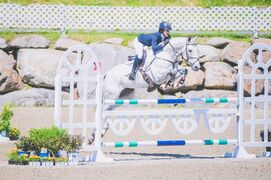 We are very excited to host a jumping and dressage clinic with Rebecca Steggers on October 19-20, 2019. One and two-day options available, SJ, XC, or dressage. Please send an email to aafequine@gmail.com if interested. Click here for entry form ABOUT REBECCA
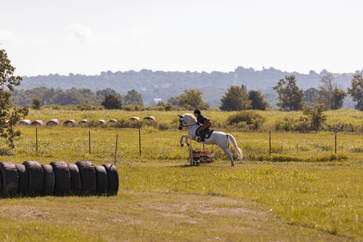 We are very excited to host our second horse show! SHOW DATE: Sunday, September 29, 2019 Always August Farm 530 Habberton Rd., Fayetteville, AR 72703 Organizer: Christy Zweig Niehues & A-Team Eventers aafequine@gmail.com 479-445-7564 Single phase Ride a dressage test of your choice, just a stadium/XC round, or put them both together for the event derby (see below). What is an event derby? This competition will include a dressage test and a jump round consisting of 8+ stadium fences and an additional 4-6 XC style obstacles. All XC obstacles will be inviting and appropriate for their level. This is a fun and casual show, but we will stick to USEA rules/regulations for tack/bitting and scoring. Protective vests must be worn for jumping at the BN level and up (we are happy to loan you a vest if you need one). ASTM/SEI Certified Helmets Required at ALL times while mounted! Scoring: All entrants will receive a score on their dressage test, converted to penalty point (for example, if you score a 70%, you will have a dressage score of 30). The jumping portion will have an optimum time and speed fault time, and penalties will be assessed at 0.4 points per second for exceeding optimum or speed in excess of speed fault time. Rails incur 4 points, and run-outs/refusals incur 20 points. A horse/rider total score is tallied with the lowest score winning. *Please note this will take place on grass with some terrain. If you have never evented before, I urge you to enter at a level slightly lower than the height you are used to jumping at home. Dangerous riding will not be tolerated. Ride times available at the Wednesday before the event. STABLING: Limited stabling/paddock space available $25/night o Light concessions available on grounds. o Please leave your dogs at home. o Dressage and Jumping will be in outdoor grass arenas. o Riders will ride dressage prior to jumping o This is an informal and fun competition! o Dressage tests available at https://useventing.com/events-competitions/resources/dressage-tests Please send your entries in ASAP so we can plan the time schedule for this event! Entries due by 9/22/19.
It's almost August and the farm is still green and beautiful (one good thing about all this rain). I'm very excited to be back riding well ahead of schedule and I've entered my first event on Ludo (Flight School) at Feather Creek Farm on August 10-11.
This summer has been filled with tons of fun trail riding and XC schooling excursions, and even lesson/husband horse, Tonic, is getting to go on outings. Most recently, lesson student, Aeryn, rode Tonic in the puddle jumpers at the NWAHJA Summer Classic, where she put in two great rounds, jumping much longer and higher courses than she had previously. Ludo also put in two great rounds where he was calm, super responsive, and jumping beautifully. We both took it slow, but still got to take home some ribbons. We are looking forward to a late summer/fall eventing season. We also have a couple horses for sale/lease and have weekend lesson availability (your horse or ours). Here are some pictures from the June 30 (rain date) show here at Always August Farm, taken by the talented Mariah Farmer. 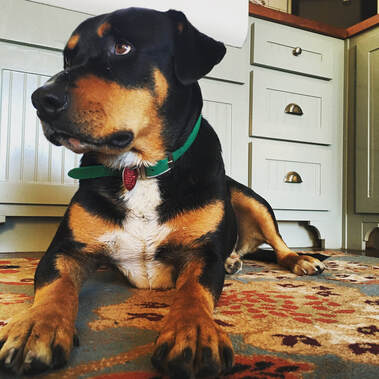 It was a rough winter on the farm. Back in September, we unexpectedly lost Bourbon, my first dog, after a short but sudden illness. He was 11, not young, especially for a big Aussie-cross, but not that old either. In January, we said goodbye to Beauty, after a long battle with her many health issues. Just a week later, Roscoe, the big pitt/rottweiler mix, went to the road and was hit by a car. I rushed him to the vet, but nothing could be done for his massive internal bleeding and spinal injury, so we had to put him down. Then there was the rain....it didn't stop. All winter long it was 30-40 degrees and raining. My truck also died, and the repair bill was so high I had to sell it and get a new one. During all this time, I also was under extreme stress at my other job, the one that really pays for the farm. I remember thinking that there was no way things could get any worse. Despite all that, I pushed on. Both Ludo and Knox were going well and showing a ton of potential. In February, I brought both of them to Texas and had a few days of super helpful lessons and XC schooling with Rebecca Brown. With all the other bad stuff that happened during the winter, riding these two horses was definitely a bright spot. I was pretty excited about the 2019 show season! I'm not sure what higher power I pissed off, but fate definitely had other plans. Just a week after coming home from Texas I was riding Knox in the outdoor ring, cantering over a couple small jumps. I landed, made the turn, sat up and half-halted, when suddenly I hear a "pop" -my hackamore chin strap had snapped! My reins pulled back to my chest -I had nothing. Knox cantered on, accelerating slightly, so I reached forward and tried to grab him by the cheekpiece. In doing that, I actually pulled the entire bridle off his face, and that's when he decided to really go for it. Before things got horribly out of hand, I decided to just jump off. While my normal brain knows that jumping off a cantering horse and trying to land on your feet isn't the best idea (drop and roll everybody), my slightly panicked brain didn't get that memo. I landed on my straight right leg, got a little hung on the left, and planted it hard, twisting as I landed. When I went to stand up, I felt a "slithering" of some things moving in my knee and my ankle wasn't working properly. At first I thought I would be fine, then I did that thing that all injured horse people always say they wish they didn't do...I took off my boots. The pain was pretty extreme and I was having a hard time walking, so I drove myself to the urgent care (using my left foot). I sat in the waiting room crying for an hour, thinking that taking time off riding, work, and the farm, due to an injury, was the ONE thing that my life absolutely could not handle. I was wrong! Although it seems crazy to say this, this injury has been a good thing. I leased out Knox and he has had a great time doing some spring clinics and shows. Ludo went down to Rebecca Brown in Texas and got 6 weeks of professional training. She rode him in the May Texas Rose H.T. and placed 8th, with a super clean XC! I am continuing to recover from surgery and spending some time working slowly on my flat work. The farm has continued to run, and I've been able to re-focus some of my efforts on teaching and even planning a little show. Sometimes a little time off can be a good thing! Two Phase Combined Test/ Event Derby
SHOW DATE: Sunday, June 23, 2019 Always August Farm 530 Habberton Rd., Fayetteville, AR 72703 Organizer: Christy Zweig Niehues aafequine@gmail.com 479-445-7564 What is a combined test? A combined test is two of the three phases of eventing. This competition will include a dressage test and a jump round consisting of 8 stadium fences and an additional 2-4 XC style obstacles. All XC obstacles will be inviting and appropriate for their level. This is a fun and casual show, but we will stick to USEA rules/regulations for tack/bitting and scoring. Protective vests must be worn for jumping at the BN level and up (we are happy to loan you a vest if you need one). ASTM/SEI Certified Helmets Required at ALL times while mounted! Scoring: All entrants will receive a score on their dressage test, converted to penalty point (for example, if you score a 70%, you will have a dressage score of 30). The jumping portion will have an optimum time and speed fault time, and penalties will be assessed at 0.4 points per second for exceeding optimum or speed in excess of speed fault time. Rails incur 4 points, and run-outs/refusals incur 20 points. A horse/rider total score is tallied with the lowest score winning. *Please note this will take place on grass with some terrain. If you have never evented before, I urge you to enter at a level slightly lower than the height you are used to jumping at home. Dangerous riding will not be tolerated. Ride times available HERE the Wednesday before the event. STABLING: Limited stabling/paddock space available $25/night o Light concessions available on grounds. o Please leave your dogs at home. o Dressage and Jumping will be in outdoor grass arenas. o Riders will ride dressage prior to show jumping o This is an informal and fun competition! o Dressage tests available at https://useventing.com/events-competitions/resources/dressage-tests
2016 TB Filly for sale. Should mature around 16hh. Started under saddle lightly. Super friendly, calm, and steady personality. Great prospect for any discipline. Leads/ties/loads/bathes well. Has traveled to big venue (Texas Rose Horse Park) and shown in hand for the FEH 3-year old class --placing 2nd with excellent scores on conformation.
Today I had to say goodbye to Beauty, my first “real” event horse and my partner of nearly 20-years.
Back in the year 2000, when it came time for me to upgrade from my 14hh quarter-pony, my dad helped me pick up a gangly chestnut mare from the race barn in Western Massachusetts. Beauty was too slow to race and apparently had refused to leave the starting gate. We took her back to Coursebook Farm (Sherborn, MA) and although her vetting was less than stellar, we decided to keep her anyway. As soon as we loaded her in the trailer, I was so attached and thrilled at the prospect of finally owning my own thoroughbred, there is nothing anyone could have said that would have dissuaded me. Beauty tolerated me, and I had no idea how lucky I was to get an off-the-track TB who would even do that. At age 13, I truly had no business owning a green horse of any kind. She fell on me at our first event in stadium (between fences 4 & 5), and I was hauled off in an ambulance with a concussion and broken collar bone. I returned to the barn the next day, donning a figure-8 brace and arm sling, and sat on her bareback in her stall, just to make sure I hadn't lost my "nerve.” Over the next few years, with the help of many, especially Carol Mayo and Douglas Grindle, I was able to compete Beauty successfully through the USEA Training level. She was a frustrating horse --so afraid to touch a rail that I was as likely to go clean as I was to be eliminated in show jumping. She taught me everything about riding, caring for injuries (there were many), and persevering in the face of disappointment. Most importantly, she was my rock through some of the most tumultuous years of my youth. Caring for her gave me a much more productive after school activity than most teenagers had. Her name became an unconscious mantra that settled and centered me in any situation. When I got ready to graduate high school in Dover, MA, and my family moved to Arkansas, I had to sell her. She had multiple owners during the next few years, and did a variety of jobs, from the hunters to dressage to trails, until she was physically unable to. During college, I worked for Sandy Hamm Horses, helping off-the-track thoroughbreds transition to new careers. When I graduated, one of Beauty’s old owners told me she was in need of a new home and I was given the option to get her back. Although she was now aged and had a variety of physical issues that limited her career options, Sandy Hamm Martini supported me. She loaned me her truck & trailer, and we drove from AR to MA to pick her up. With a snow-storm blowing in, we loaded her up and turned around to head straight home. The weather conditions were so terrible that the trailer nearly passed us on an icy New Jersey Highway. We didn’t sleep for over three-days trying to get home, and it is a miracle all of us survived that trip. In 2009, with no jobs to be had in the decimated Northwest Arkansas economy, I got a job as the Horseback riding program director for the Girl Scouts of the Minnesota and Wisconsin River Valleys. I couldn't imagine leaving Beauty behind, so we made the 13-hour trek north together. We rode for hours in the wilderness at Camp Whispering Hills, and led hundreds of trail rides at Camp Northwoods. Beauty loved her western trail saddle, was an expert at neck-reining and ponying camp horses, and dutifully followed the trail while I sat almost backwards in the saddle keeping my eye on the campers behind us. Although I felt miserable at times: homesick, lovesick, eventually sick with Giardia, it was the best summer of my life. Beauty and I came back to Arkansas, and I fox hunted with her at Misty River Hounds. She enjoyed all of her careers, but always was an eventer at heart. While walking hounds one day, I stopped and dropped my reins to let her drink from a pond. She took this action as an invitation to jump down the “drop fence" and gallop through the deep water, looking for the red and white flags on the other side. As an adult, I bought my own farm and was able to keep her with me at my home. Her face is the one that appears on my farm logo. She taught countless people how to ride, made a comeback in the jumpers with another young teenager, and never truly settled down enough to be a calm and reliable kid's horse. She maintained the chestnut mare stereotype until her last days, nickering at me with pinned ears. Beauty was here for me during every pivotal moment of my life so far; I think that's a rare and unusual gift, something that few people have. I am happy thinking of her on her best days, doing what she loved: leading and bossing somewhere outside with endless trails, cold nights, and sunny days. |
Details
Christy ZweigAdventures eventing as a semi-pro in the mid-south. Archives
April 2024
Categories |
||||||
Proudly powered by Weebly

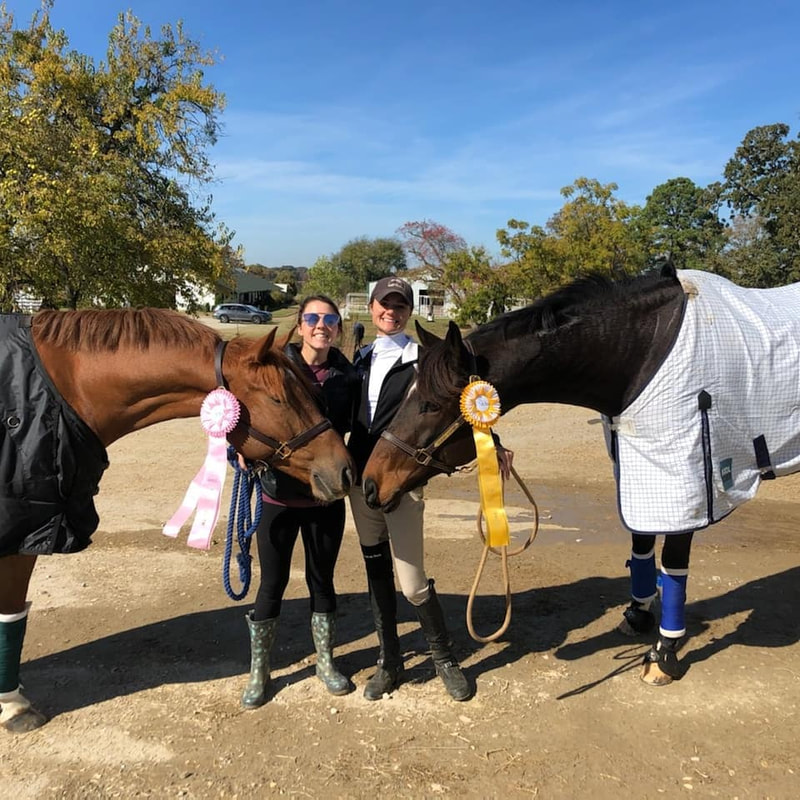
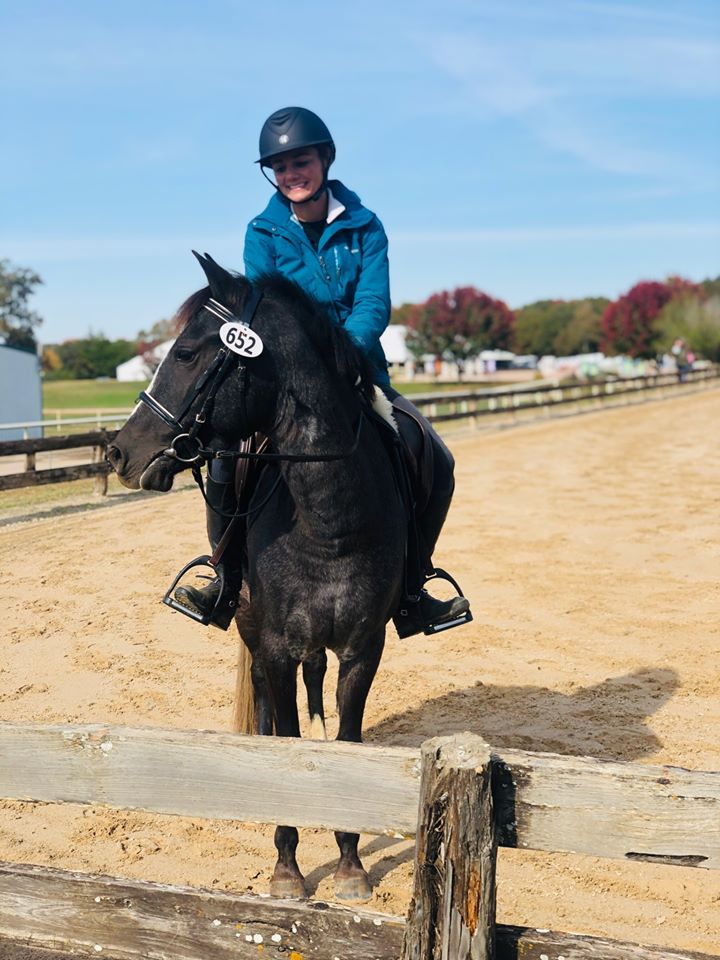
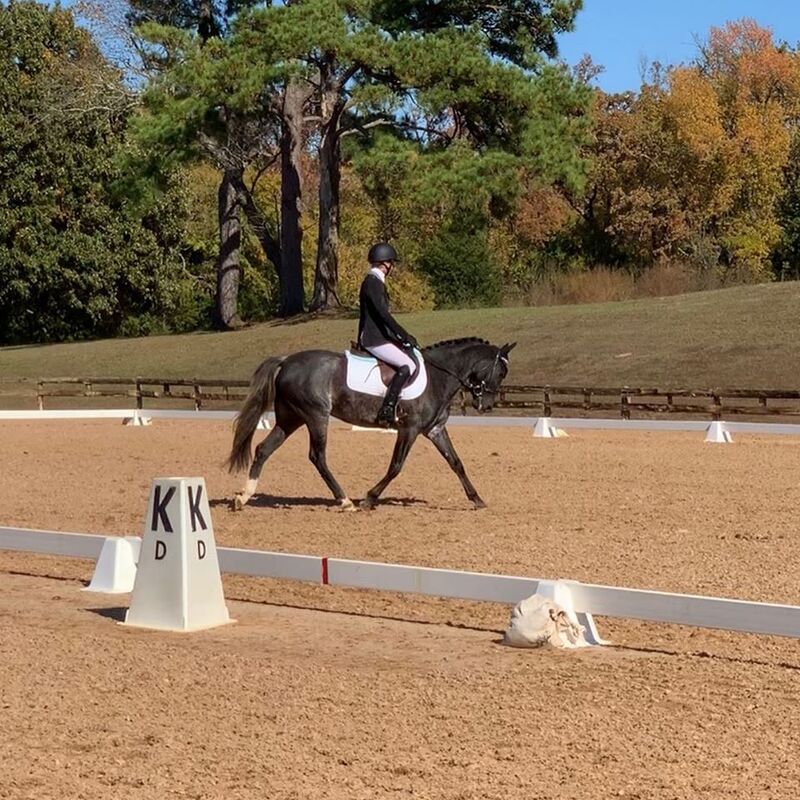
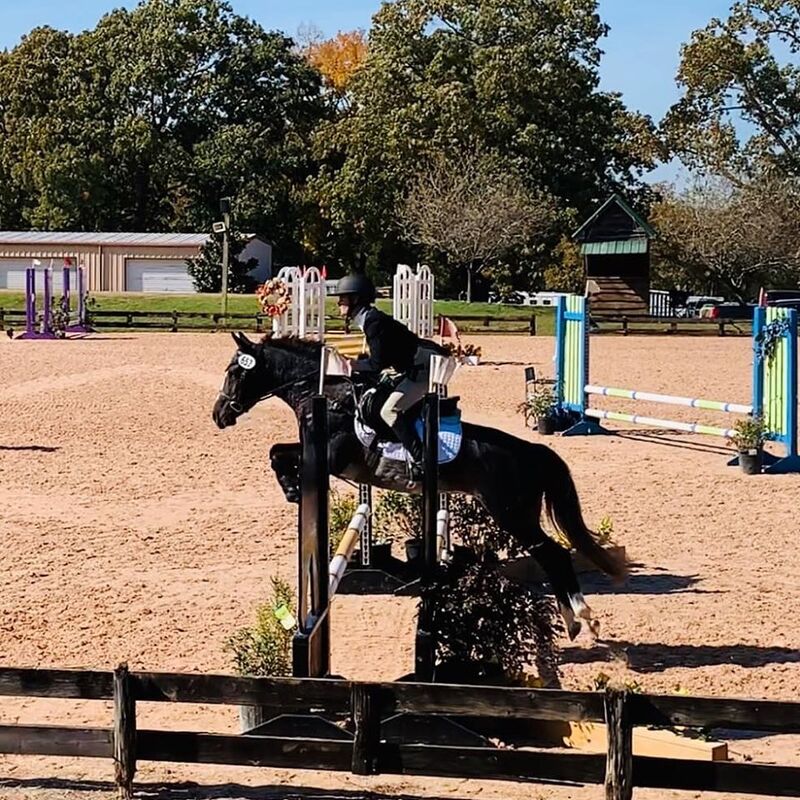
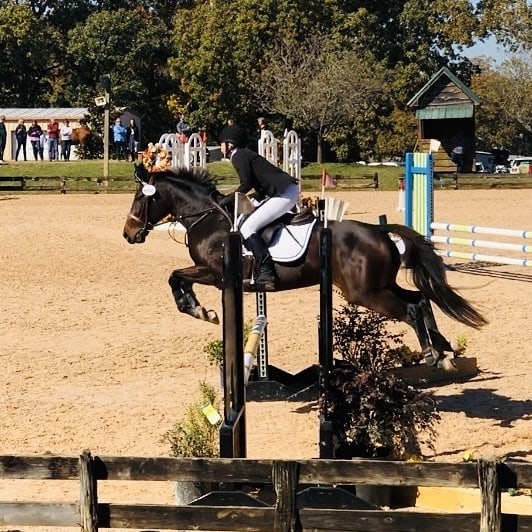
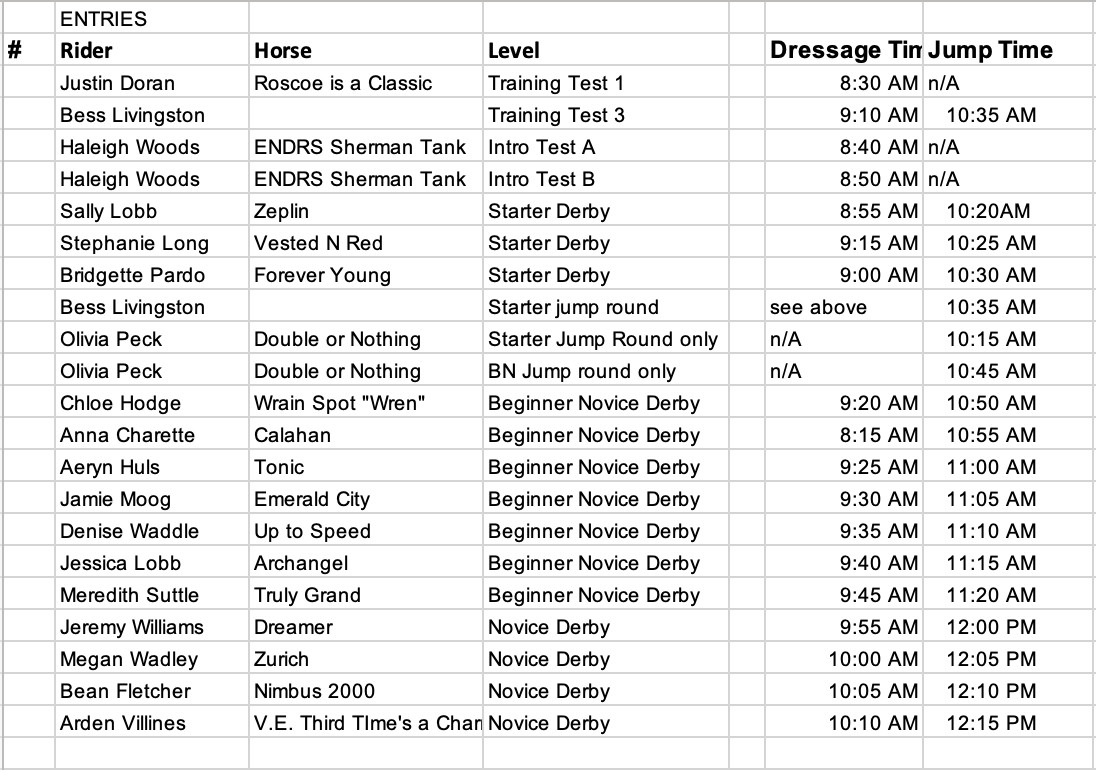
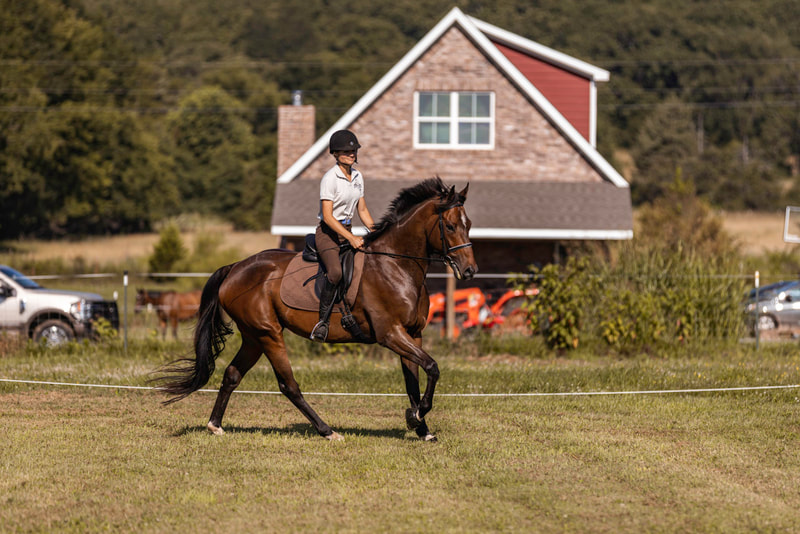
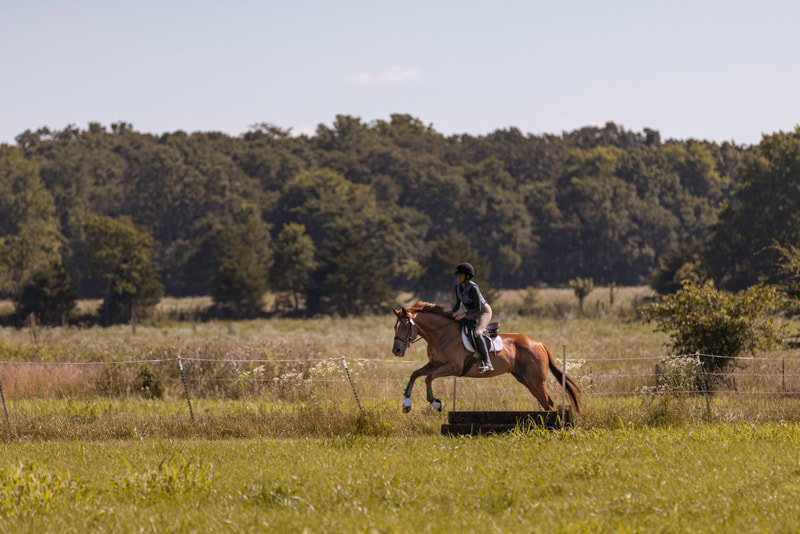
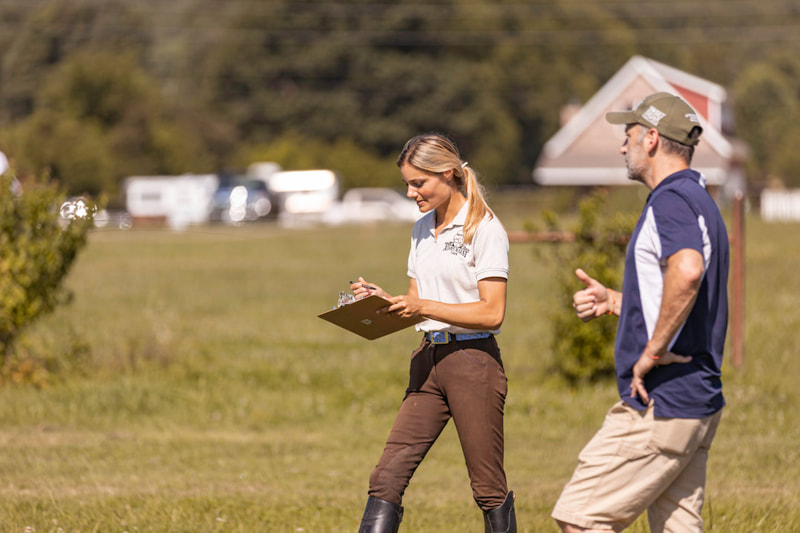
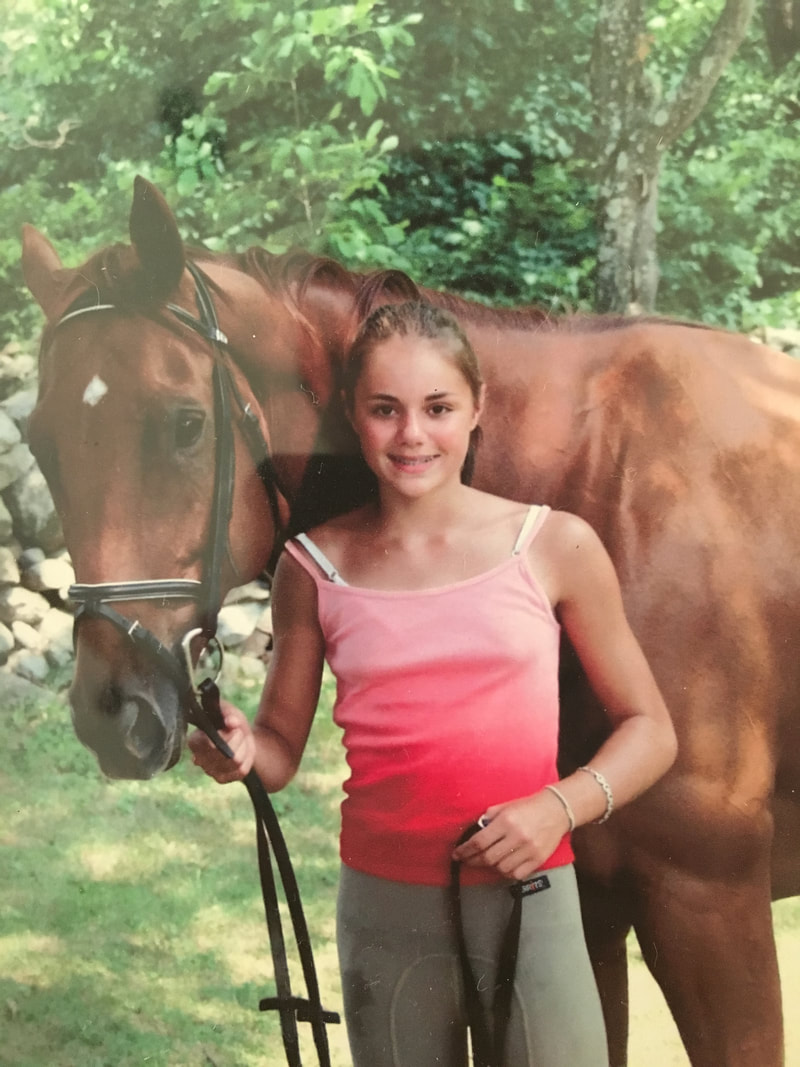
 RSS Feed
RSS Feed